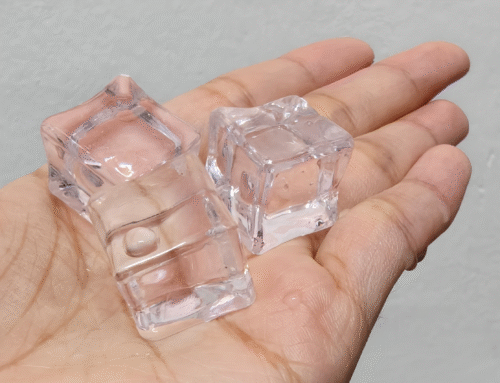
Someone Needed Help, So I Helped : Laura’s Journey as a Living Kidney Donor
For Laura, a registered nurse with fifteen years of experience, donating a kidney was not a radical idea. It was, in her words, “the right thing to do.”
Her mother had set the example decades earlier, becoming one of the first Good Samaritan donors at the Medical University of South Carolina. Growing up, Laura saw her mom give a kidney to a stranger and return home unchanged. That early experience shaped her perspective: organ donation wasn’t extraordinary, it was normal, generous, and life-saving.
“Donation never seemed strange to me. It was simply someone needing help—and if you could help, why wouldn’t you?”
A Legacy of Giving
When Laura later learned of a woman in need of a kidney—a healthy, active grandmother, much like her own mom—she didn’t hesitate. “I thought, what if this were my mother? I knew immediately I was going to do it.”
Her nursing background only strengthened that instinct. Working with patients navigating dialysis and transplant lists gave her an intimate view of the struggles of chronic kidney disease. “Being a nurse helped me understand the barriers,” she says, “but it also gave me patience with the process.”
A Long Road to Surgery
From her first call to the transplant center to the day of her surgery, the process spanned nearly 18 months. There were home tests, intensive evaluations, and logistics that required multiple trips.
At one point, Laura and her intended recipient failed their medical cross-match. Many would have stopped there. Instead, Laura entered the paired donation program, where unmatched pairs are linked to others, creating “chains” of donors and recipients.
Laura’s decision connected her to the hospital’s largest chain to date: ten people bound together by generosity.
“I wasn’t nervous about surgery. I just wanted my kidney to work.”
The Importance of Support
Laura initially kept her plans private, sharing only with her husband, parents, and twin sister. She feared the disappointment of being ruled out medically. But once she opened up, she found unwavering encouragement. Her husband became her anchor, and her friends organized meals and fundraising to cover the income gap left by unpaid leave.
The experience underscored how much community matters. For living donors, the surgery may be solitary—but recovery is collective.
Changing the System
Laura’s greatest challenge came not from medicine, but from workplace policy. As an employee of the very hospital where she would donate, she discovered her leave policy only allowed five days of paid time off—far short of the eight weeks she would need.
She refused to accept it. After weeks of back-and-forth with HR, Laura wrote directly to hospital leadership, outlining the unfairness of the policy and its potential impact on future donors. Her persistence worked. The hospital adopted a new policy granting 30 days of paid leave and guaranteed job security for living donors.
This wasn’t just a victory for Laura—it was a change that will benefit countless others.
Complex Emotions
Years after her donation, Laura experienced an unexpected emotional blow. Through a medical record error, she accidentally learned the identity of her actual recipient—a 12-year-old child in Florida. When she searched the name online, she found an obituary.
“It was devastating,” she admits. “But I reminded myself—my kidney gave them almost three extra years. And I would do it again, a thousand times.”
Her honesty about these moments is striking. She speaks openly with potential donors about both the triumphs and the heartbreaks, believing transparency is key.
“It’s not amazing. Someone needed help and I helped them. That’s the way I was raised.”
Watch the full interview here
The Ripple Effect
Laura resists being called a hero. To her, donation was simply the right response to someone else’s need. Yet her journey demonstrates how far one act of generosity can ripple outward.
Policy change: future living donors at her hospital now have fairer leave and job security.
Community inspiration: Several people have reached out after hearing her story, with some choosing to donate as well.
Patient impact: her intended recipient continues to live and thrive, while her actual recipient received precious time otherwise unavailable.
A Psychonephrology Perspective
Laura’s story reminds us that kidney health is not only medical—it is deeply psychological and emotional. Living donors carry unique experiences: resilience, pride, grief, and hope. Families of recipients feel both gratitude and vulnerability. Communities rally in unexpected ways, providing meals, fundraising, and moral support.
This is psychonephrology in action: understanding the emotional weight of kidney disease and treatment, and honoring the mental as well as the physical journey.
Closing Reflection
Laura often says she wishes she had another kidney to give. Her story reflects the extraordinary impact of “ordinary” choices—one nurse, one decision, changing many lives.
It is a reminder that even in the face of systemic obstacles, individual compassion can transform not just patients, but policies and communities.
For those living with kidney disease, for families waiting, and for anyone considering donation, Laura’s journey carries a simple yet profound message:
Generosity is not extraordinary—it is human.
Laura Smoragiewicz is a registered nurse with 15 years of experience and a proud living kidney donor. Inspired by her mother’s example as a Good Samaritan donor, she chose to give the gift of life herself. Beyond surgery, Laura advocated for workplace policy changes to support future donors and continues to share her story to inspire others.
Quick Facts About Living Kidney Donation
About the Author
Samaira
Samaira Rana is a social media assistant who creates engaging video content and conducts interviews with community members to share real-life perspectives on the effects of kidney disease. Currently a high school student, she enjoys reading and writing, which inspire her creativity in digital storytelling.
“Being a nurse helped me understand the barriers,” she says, “but it also gave me patience with the process.”








